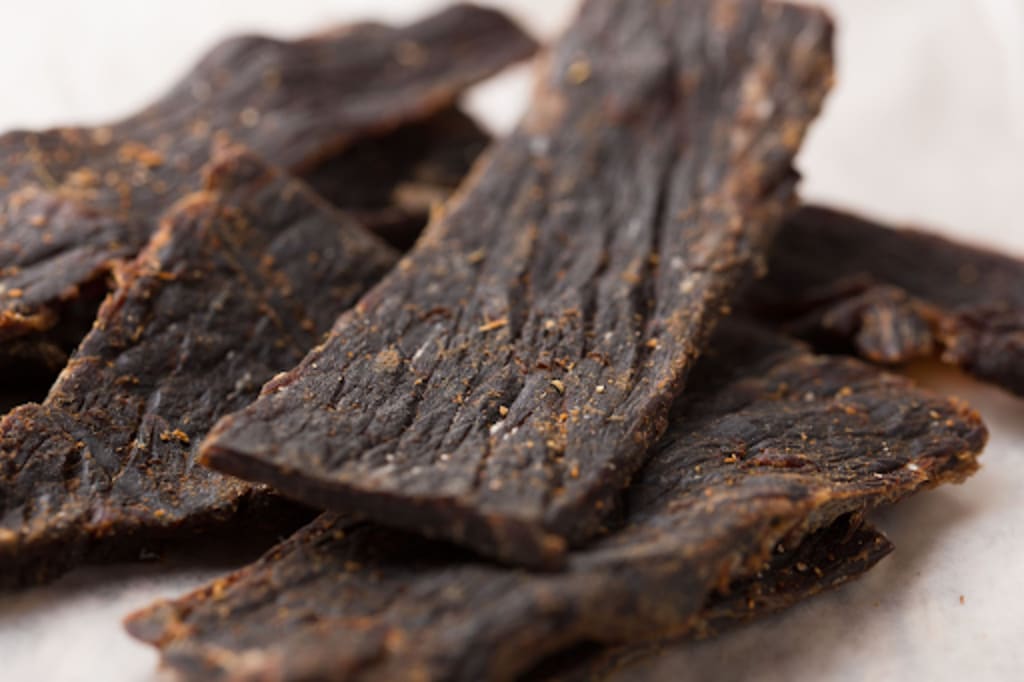Everything You Need to Know About Beef Jerky - a Fad or a Healthy Snack?
Is Beef Jerky Healthy? Here's What You Should Know

Our fast-paced lifestyles have given way to a rise in snacking. Sometimes, work can exhaust you and, in order to refuel yourselves, the only way to gain energy is by consuming a small snack in-between meals.
While junky snacks, such as chips and chocolates, may be tempting to consume, they’re not necessarily the best options for your body. Luckily, there is a huge variety of healthy snacks available for you to choose from.
One option that’s recently gained traction as a healthy snack is beef jerky. Beef jerky is not only convenient, but it’s delicious, too. Additionally, it’s high-protein content makes it a powerhouse snack, especially when you’re looking for workout food that retains your energy.
In the past, beef jerky was often associated with junk food. However, if you’re familiar with a low-carb diet, you might know that this isn’t the case anymore.
Beef jerky is actually a popular food to snack on, and, just like many other foods, there are many alternatives for you to explore. These alternatives include healthy varieties that you can have when the craving hits you.
But is beef jerky really a healthy snack? Let’s read on:
How is beef jerky made?

Firstly, to determine how healthy beef jerky is, it’s essential to know how it’s made. In the past, when South American natives created beef jerky, it was the healthy kind.
However, as time progressed, it was developed using all kinds of meat, including turkey, beef, duck, and buffalo. Meat strips are marinated in salt, dried, and then cooked for a couple of hours. Jerky, today, also includes artificial flavors and is filled with sodium.
These unhealthy versions contain nitrates and can cause a variety of heart issues, increase the probability of diabetes, and harden the arteries. It may also create other problems, such as nausea, headaches, and heart palpitations.
How healthy is beef jerky?
According to the USDA, a single ounce serving of beef jerky contains:
- 116 calories
- 7g fat (3 saturated fat)
- 3g carbs
- 9g protein
- 0g fiber
- 2.5g sugar
- 506mg sodium
Beef jerky of the low-carb and fat variety has proven to be an excellent source of lean protein when you’re looking for a fix. Additionally, it is filled with healthy nutrients, such as magnesium, iron, and zinc. While old versions of beef jerky were much higher in saturated fats, modern versions of it are low in fat and contain less sugar.
So, what exactly are you looking for when choosing healthy beef jerky?
Here’s what you should keep an eye out for:
- Organic beef that is minimally processed, organically certified, and grass-fed.
- Includes simple ingredients such as beef, water, salt, and sugar.
- Beef should be organic and grass-fed.
- Absence of processed ingredients, such as processed beef.
- Absence of unhealthy ingredients, such as artificial preservatives, MSG, and nitrates.
- Absence of sugar - more than 5 grams and sodium - more than 350 grams.
- Absence of low-fat content, 3 grams or less.
Nitrates, in particular, are added to ensure harmful bacteria doesn’t form. However, they are also linked to cancer and, hence, jerky containing nitrates should be avoided. Additionally, careful consideration must be taken to determine what the term ‘beef’ on any jerky pack refers to. This is because sometimes beef jerky could be made from animal scraps unsuitable for cooking.
Moreover, while most jerky is generally low-carb, additional flavors can boost the sugar and carb content, categorizing the snack as candy.
Is there another kind of jerky available?
If beef jerky isn’t your cup of tea, there are many other jerky options you can consider, such as pork, chicken, turkey, salmon, and even vegan options. Keeping this in mind, any kind of meat or vegan option should be consumed moderately and as a snack. Hence, when you’re looking for jerky, do look for wild-caught or free-range varieties.
It’s understandable how tempting it is to consume the entire bag in one go, so be careful about the serving size. And if it’s still difficult to control yourself, then single-serving bars or packets are the way to go. Additionally, due to the high sodium content, beef jerky should always be paired with hydration, such as water or juice. Furthermore, you can pair beef jerky with carbohydrates, such as fruit, if you’re feeling sluggish.
What other snacks can I consider?

If you’re still on the fence about beef jerky, there are plenty of other snack options that you can have when you’re looking for something low-carb and high-protein. You can try eating trail mix, protein bars, or hard-boiled eggs.
Conclusion
Beef jerky is an excellent snack to consider when you’re looking for something tasty, healthy, and high in protein. It’ll also get you through your workout and recovery period.
However, just like other snacks, it’s essential to be careful about which option you’re considering due to any hidden sugars or questionable ingredients it might contain. Ideally, you should find jerky that doesn’t include these and is, instead, made of wholesome ingredients such as meat and seasoning only.
When you know what you’re looking for and what you need to avoid, you’ll be able to find a healthy version of beef jerky that you can have any time.
Have you ever tried a healthy version of beef jerky? What did you think of it? Let us know in the comments below!






Comments
There are no comments for this story
Be the first to respond and start the conversation.